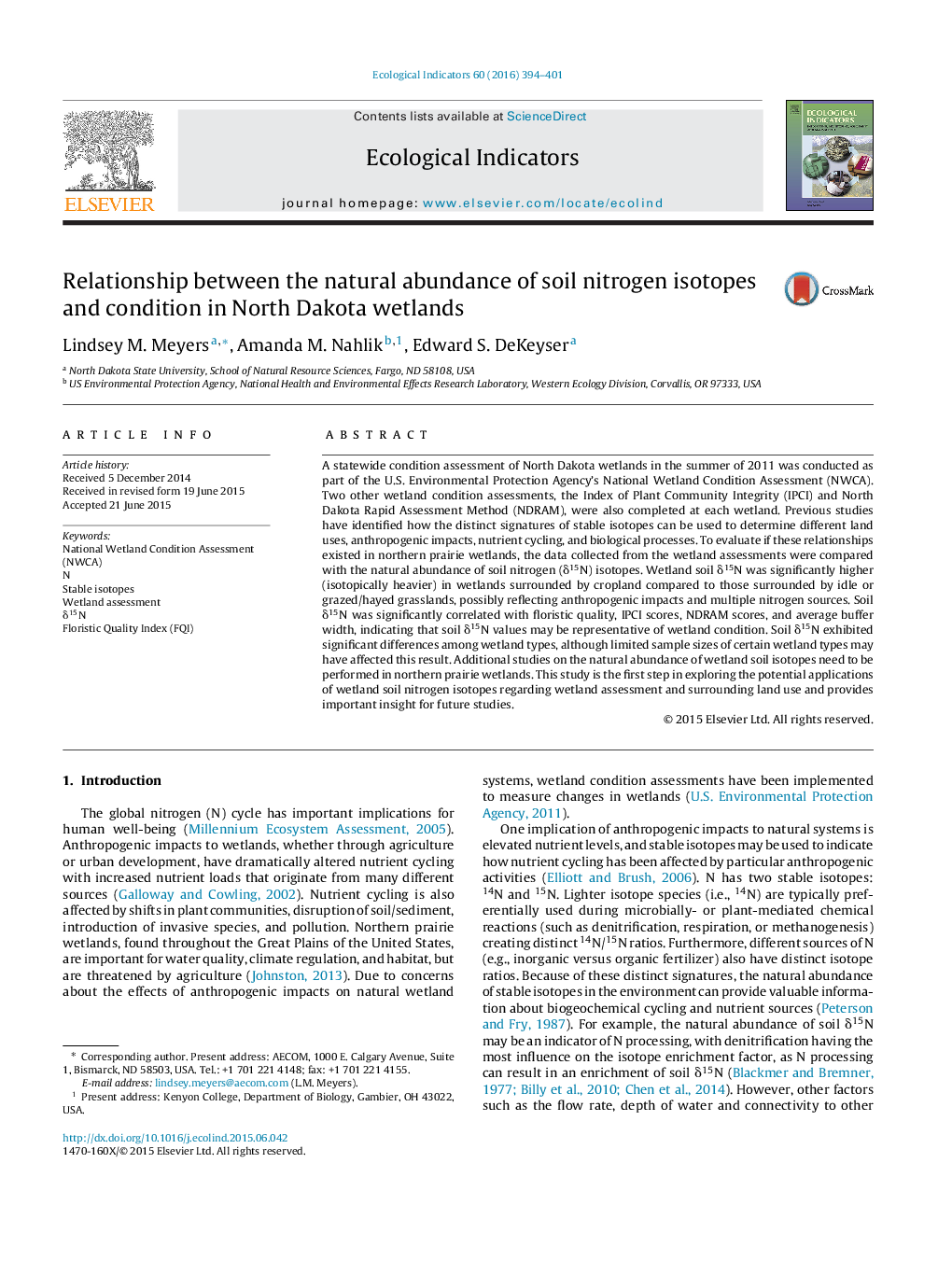| Article ID | Journal | Published Year | Pages | File Type |
|---|---|---|---|---|
| 6294063 | Ecological Indicators | 2016 | 8 Pages |
Abstract
A statewide condition assessment of North Dakota wetlands in the summer of 2011 was conducted as part of the U.S. Environmental Protection Agency's National Wetland Condition Assessment (NWCA). Two other wetland condition assessments, the Index of Plant Community Integrity (IPCI) and North Dakota Rapid Assessment Method (NDRAM), were also completed at each wetland. Previous studies have identified how the distinct signatures of stable isotopes can be used to determine different land uses, anthropogenic impacts, nutrient cycling, and biological processes. To evaluate if these relationships existed in northern prairie wetlands, the data collected from the wetland assessments were compared with the natural abundance of soil nitrogen (δ15N) isotopes. Wetland soil δ15N was significantly higher (isotopically heavier) in wetlands surrounded by cropland compared to those surrounded by idle or grazed/hayed grasslands, possibly reflecting anthropogenic impacts and multiple nitrogen sources. Soil δ15N was significantly correlated with floristic quality, IPCI scores, NDRAM scores, and average buffer width, indicating that soil δ15N values may be representative of wetland condition. Soil δ15N exhibited significant differences among wetland types, although limited sample sizes of certain wetland types may have affected this result. Additional studies on the natural abundance of wetland soil isotopes need to be performed in northern prairie wetlands. This study is the first step in exploring the potential applications of wetland soil nitrogen isotopes regarding wetland assessment and surrounding land use and provides important insight for future studies.
Related Topics
Life Sciences
Agricultural and Biological Sciences
Ecology, Evolution, Behavior and Systematics
Authors
Lindsey M. Meyers, Amanda M. Nahlik, Edward S. DeKeyser,
